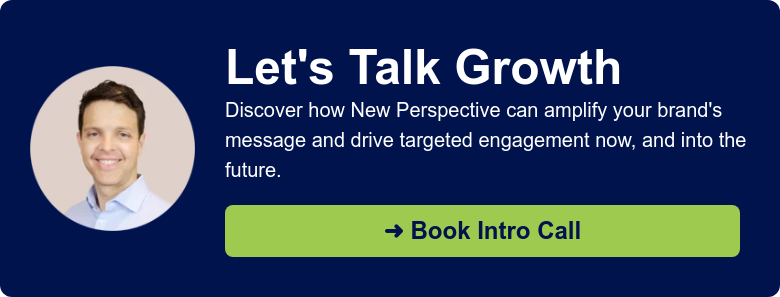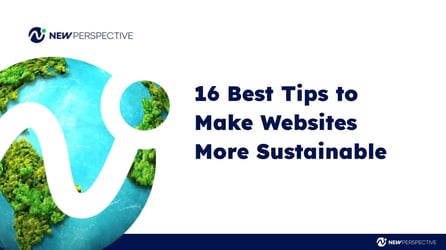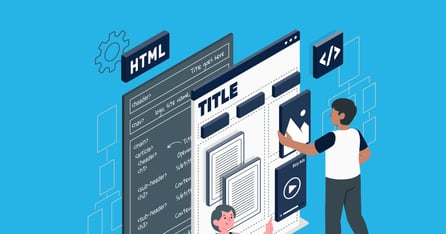10 Key Website Redesign Questions to Ask Before You Start
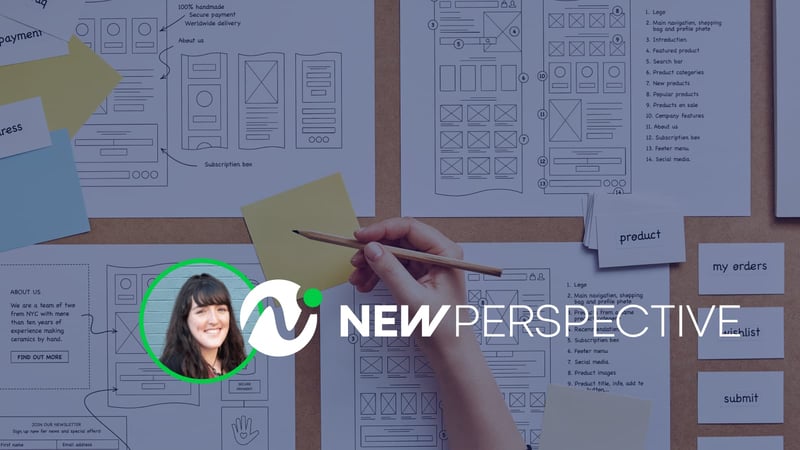
Your website is a 24-7 representation of your business and your brand. It can be a handy tool to perpetuate sales and streamline growth, and it’s an integral part of any holistic marketing strategy.
But websites aren’t static objects. There’s always room for improvement. So revamping, redesigning, or refreshing your site periodically is a good practice. Just tackle the project with purpose, planning, and a solid strategy for the best results.
We went to our senior designer Caitlin Tupper, to get her to take on the critical questions she wished everyone had asked going into a redesign. Caitlin has tons of experience steering website design or redesign projects to a great outcome, so we thought she’d be a good one to ask.
The questions she shares out here cover the goals, the roles, the content, the audience, the guardrails, the team, and a lot more. As Caitlin said, “Go into a revamp or a redesign knowing what you’re doing, where you’re going, and why. With so many moving parts, you must focus on the big picture.”
Ten key website redesign questions to ask before getting started
1. What are our website redesign budget and timeline?
Caitlin Tupper: Let's start with the basics. Before you dive in, how much are you willing and able to allocate to the project? Limitations may determine whether you opt for an in-depth, time-consuming revamp or a less complex redesign — though the latter can be more expensive than you might think.
At New Perspective, we take a growth-driven approach to our redesign projects, which can be helpful when working with a limited budget or timeline. We prioritize strategy and work closely with our clients to identify the target audience and their primary goals.
We tackle the pages and elements most vital to the success of their journey first. Then, additional pages, content, or features that don’t have as much impact are put onto a wishlist for the future. We follow the 80/20 rule of prioritization: we focus on the 20% of collective activities that will drive 80% of the value to your customers for the initial redesign of your website.
2. What are our goals for this website?
CT: This is another fundamental question. If you don’t know your destination, how will you know when you have reached it? Consider whether the primary goal of your website is sales-related or focused on building your brand image through a digital presence.
Then focus on the key phrases you want to show up in search engine results and the overall impression you want to convey. For example, would you like to greet website visitors with an impressive high-tech display or something more traditional?
3. How will we define success?
CT: This isn’t as abstract as it sounds. It’s pretty concrete, based on clear metrics. First, establish the key performance indicators (KPIs) to measure success. Once you know these, you can start evaluating how the revamped site works, beginning on the day you launch and continuing to check and recheck over time.
4. Who is our target audience?
CT: I wish everyone knew how essential this question is. When you speak to everyone, you talk to no one. Your website must cater to those you'd like to do business with. So: Who do you want to do business with?
Everything on your site — from words to headlines to content to logo to visual elements to navigation — will influence a purchase decision one way or the other. So take the time to work this out and research before you embark on a redesign. Determine who it is you’re talking to, what their demographics are, what their job position is, and what primary challenges your company can help them overcome.
The strategist on our team takes pride in leading our customers through this during the planning phase. It’s always gratifying to see how much it pays off.
5. What resources do we have, and what resources do we need for a website redesign project?
CT: By resources, I mean content. It’s essential to determine what content needs to be on your site. It’s always a good idea to audit your existing content and determine what should be more accessible to your audience. This could be anything from imagery to brochures to product sheets.
Whatever company resources you have that could be valuable to your potential buyer can be adapted and included on the site. In other words, don’t separate those assets: you need present, available content to help people along the sales journey.
I’ve also seen companies that don’t have all the resources they need, and the website redesign project prompts them to create those missing components.
6. Does our visual brand represent us in the best possible way?
CT: On your website, it is essential that your brand is recognizable and well-represented on every single page. You convey that visual brand through your logo, color scheme, fonts, imagery, and associated graphic style.
If you haven’t fleshed this out before bringing a new website to life, consider doing this as a first step. It’s a great exercise in clarifying the brand you want to present to the world (and not just on a website).
More questions to ask:
When was the last time you redesigned your logo? Does it feel outdated? Is it solid and recognizable?
What about your brand: Have you built strong brand guidelines that support your logo and graphic content? Hint: brand guidelines are invaluable from our point of view.
Consider the images you’ve got on hand: Do you have a bank of high-quality images of your products, services, and people?
These brand assets work together to establish a modern and cohesive web presence. They will serve you well in other areas too.
6. Should we go for a full revamp or a website redesign?
CT: Look at your existing website regarding what value it brings your business now. It’s a good idea to audit its performance to determine what’s working and what isn’t.
For instance:
What pages are already performing well regarding keyword, ranking, and conversion?
Are we currently getting enough leads?
Does the site serve a function on par with our present business goals?
Does our website help or hinder our teams?
Ask the people who need the website to work for them. Find out what they wish was better. Regarding due diligence, I would say that the shortest distance between two points (being direct) is usually the best for me.
Does our website reflect our present identity?
For instance, your website no longer reflects your new direction as a rapidly growing company with new products and projects hitting global markets. The website is still focused on pilots and testing. Doing a spot revision won’t cut it. You’ll need a revamp.
Is our website hard to maintain and update?
Consider the upfront cost of a revamp and the costs saved over time versus opting for minor changes that don’t replace an out-of-date content management system. Technology around website development and maintenance constantly evolves, and using antiquated methods will lose your website visitors and potential leads. Even something as simple as loading time has a huge impact.
Does our website have the right content?
If your website functions well, but each page is loaded with the text you want to streamline, consider a redesign that builds off of your current site's existing bones and framework.
Does our current website have a good CRM?
Looking into a more robust CRM to integrate with your new website to save your sales team hours of work, improve the quality of your pipeline, and bring in more revenue year-over-year.
7. What features does our website need?
CT: There are many things your website could do, but do you need (or want) every bell and whistle? Please look at what you need your website to do for your team and customers, then use that information to decide what features your website should have.
The best news is that you don’t have to start from scratch — we recommend not doing that. Instead, use a theme with different modules and a library to draw from as you grow. Check out our theme on the HubSpot CMS (we call it B2B Engine Pro) and the modules offered there.
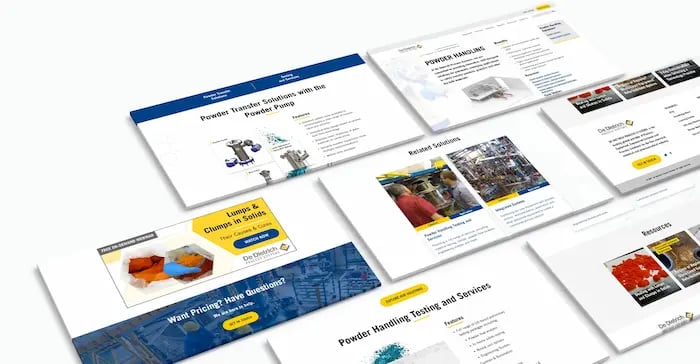
8. What websites do we like — and why?
CT: One of my favorite phases in a website project is looking at other sites together. It’s an exercise that can be pretty revealing: you find out what you like and don’t. Avoid sticking only to your niche — look beyond competitors to brands outside your market. Think about the websites you enjoy using and the ones you find frustrating. We encourage clients to take notes while browsing and be objective and specific.
Each website has a different goal, to be sure. But knowing what yours is for your website opens up the opportunity to discover a valuable feature you may need to learn about.
9. What team members should be directly involved in the website redesign project?
CT: Websites can create interesting blind spots across an organization: you must ensure the people who rely on them are included in the conversation. They may need more time to participate regularly, but you need their insights.
They will know how products and services are being presented and how information and content are landing with customers. They’ll know if leads are falling between the cracks and probably have some inkling as to why. Others who should be involved include anyone who updates, publishes content, or manages some aspect of the site now.
Could you invite their feedback and take the time to get a complete picture of their needs and observations (and complaints)? Of course, but here’s where it can get messy: you must ensure one point of contact is responsible for all decision-making and approvals.
It is tough to redo a website via an ad hoc committee. If you’re working with an agency, you need one person on your team to have apparent authority so that review cycles and changes can happen smoothly.
10. Should we redesign the website ourselves or work with a specialized agency?
CT: I saved this question for last, but it’s related to the entire website redesign process and requires serious consideration. From experience, I can say that embarking on a website redesign process internally can work, but it’s not always optimal.
Executing a website redesign internally may be tempting to save yourself the cost of working with an agency. But consider all the time, resources, and people power to get it done: Will that take up valuable bandwidth your team needs to do their jobs and be productive?
Another factor: the experience and skills available. An agency brings expertise across numerous areas you likely don’t have within your own ranks. When it comes to something as critical and front-facing as a website, what you put into it directly impacts its success.
An agency can help drive the project strategically from a knowledgeable seat, working with your team to ensure your message is delivered effectively. As a result, the task becomes a partnership, the agency becomes an ally, and the website is a winner.
Our team would love to discuss your website needs and how we can help you achieve your goals.
Reach out and schedule a free consultation today.
